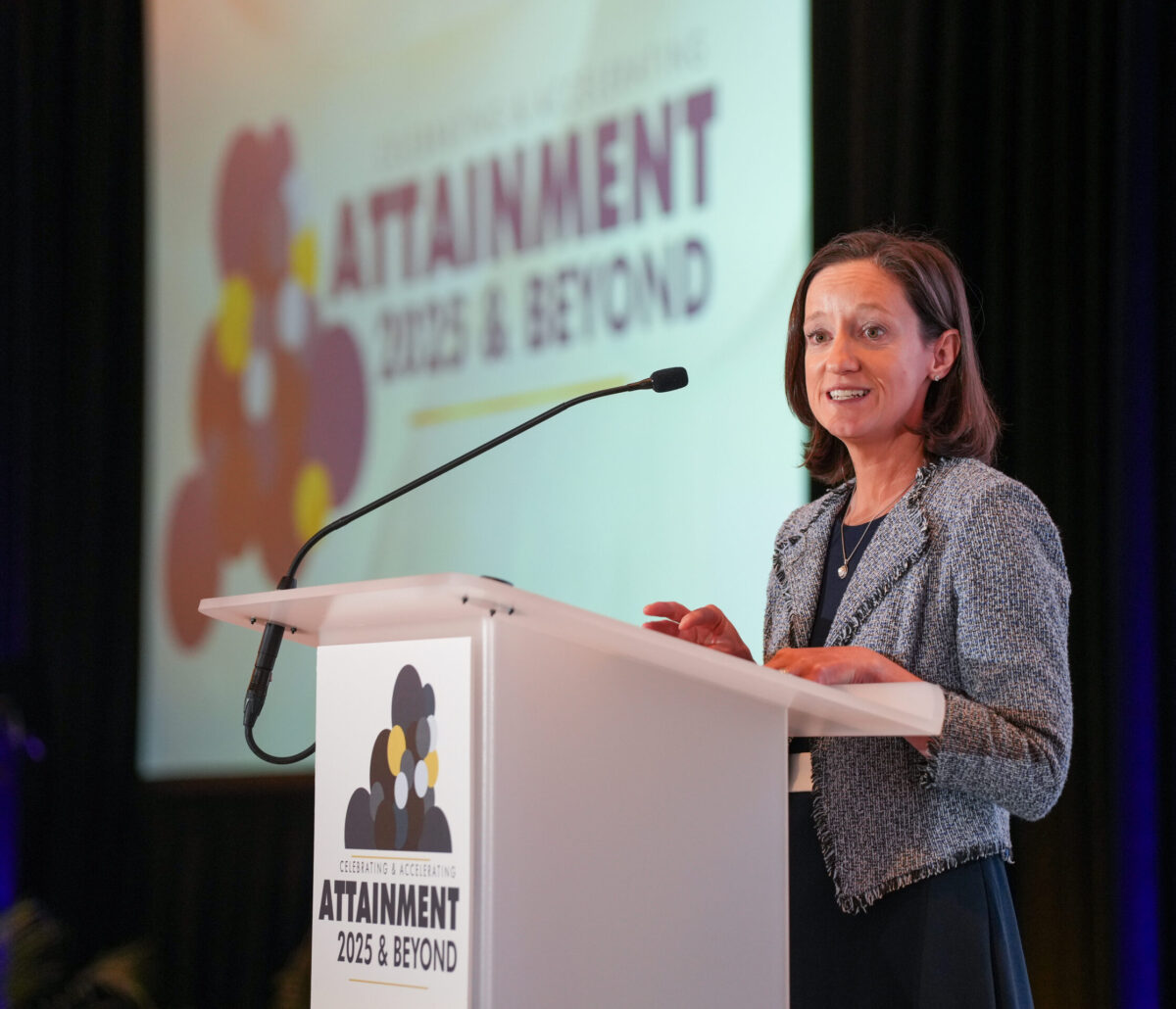Federal Grant Aid Not Enough to Support Students With the Lowest Incomes
Published May 13, 2014
Washington, D.C., April 28, 2008—Like many students, Pell Grant recipients must rely on multiple financial aid sources, including other grants and loans, to cover the rising cost of college. Students from the lowest-income families often compete with students from higher-income families for federal aid. As a result, the poorest students may have to work long hours or rely on expensive private loans and high-interest credit cards to cover the entire cost of tuition and fees as well as books, transportation, and living expenses.
According to a new report by the Institute for Higher Education Policy (IHEP), published in partnership with the American Association of State Colleges and Universities (AASCU), changes in federal policy are needed to strengthen America’s investment in financial aid in ways that help students from low-income backgrounds overcome financial barriers to higher education. The report, Window of Opportunity: Targeting Federal Grant Aid to Students with the Lowest Incomes, discusses options intended to deliver significant additional aid to the poorest students. The study highlights specific policy steps, based on Congress’ recent boost in Pell Grant aid, to more-narrowly target grant aid to the lowest-income students.
Federal Policy Options
- Adjust the Federal Need Analysis Rules to Allow for a Negative Expected Family Contribution (EFC). This option would allow significantly more grant aid to flow to the lowest-income Pell Grant recipients without affecting the awards available to other students. Bureaucratic rules put in place by the Department of Education prohibit the EFC from falling below zero even though the federal-aid formula often results in negative numbers. Students whose families have a “negative” EFC currently receive the same amount of aid as higher-income students whose families’ EFC is zero. A targeted and effective solution involves allowing the lowest-income students, those with a negative EFC, to receive up to an additional $750 in Pell aid.
- Raise Both the Minimum and Maximum Pell Awards. Raising the minimum award eliminates higher-income students from the program while better-targeting assistance to students from lower-income families by potentially increasing the size of their individual grants. However, raising the minimum amount awarded to individual students could make it tougher from some students who really need the help to meet postsecondary expenses.
- Target New Investments to Low-Income Students. When new investments are made in federal grant aid, it is important to target them to the students who need it most. Two new federal grant programs created in 2006—the Academic Competitiveness Grant and the National Science and Mathematics Access to Retain Talent Grant—are tied to the Pell program in how they are delivered; however, both programs are constrained by eligibility requirements (e.g., grade point average) that call into question the ability of the lowest-income students to access these new resources. To receive the Academic Competitiveness Grant, for example, students must complete a college preparatory curriculum which may not be available to very low income students attending poorly resourced high schools.
- Raise the Maximum Ceiling for Individual Pell Grants. The College Cost Reduction and Access Act of 2007 delivered a much-needed boost to the appropriated maximum award for eligible recipients—the maximum Pell will reach $5,400 by 2012-13. By raising the maximum award, the program increases the amount of aid available to all Pell recipients, including those with the lowest incomes. Raising the maximum award also expands the pool of eligible recipients and includes students with higher incomes.
“The experiences of Pell Grant recipients enrolling in and paying for college demonstrate the economic hardship that postsecondary expenses can have on low-income students, especially those from the poorest families,” said Thomas Parker, IHEP interim president and senior associate. “We are calling for narrowly focused policy changes as first steps. Given the legislative environment regarding student financial-aid policy, policymakers have a real opportunity to make fiscally responsible decisions that significantly increase support through the Pell Grant program for students who need help the most.”
Earlier this month, Sen. Edward M. Kennedy (D-Mass.) introduced the Strengthening Student Aid for All Act of 2008 to help students and families more easily receive federal grant and loan aid to pay for college amid today’s unstable credit markets. Kennedy, chairman of U.S. Senate’s Committee on Health, Education, Labor and Pensions, stressed this legislation “reduces the need to rely on higher-cost private loans by increasing grant aid for the neediest students, expands federal loan limits, and makes low-cost federally subsidized loans to parents more attractive.” The bill also includes policy options presented by AASCU President Constantine W. (Deno) Curris, who wrote to Kennedy in March to suggest alternatives less financially burdensome for students and their families than raising the federal student loan limits.
“The policy options outlined in this report are fiscally sound and would help remove financial barriers that currently keep many students who are in or near poverty from attending college in the same numbers as students of similar ability but from middle- or higher-income families,” said Curris. “The more than 430 public colleges and universities that are members of AASCU have a deep commitment to access and to building a society where economic status does not determine educational opportunity. It is this commitment that motivated AASCU to commission the Pell Grant study,” he said.
The full report, Window of Opportunity: Targeting Federal Grant Aid to Students with the Lowest Incomes, is available for download on IHEP’s Web site at www.ihep.org. The AASCU president’s letter and an accompanying policy statement (“AASCU Policy Alternative to Raising Federal Student Loan Limits Project”) may be found on the organization’s Web site at www.aascu.org. Funding for the report was provided by Lumina Foundation for Education, an Indianapolis-based private foundation striving to help people achieve their potential by expanding access to and success in education beyond high school.


